Autumn seemed to be the shortest of seasons. This week has felt increasingly in the grip of winter and the temperature has rarely been far above freezing. This morning I was listening to a reading of Keats ode To Autumn on the car radio at the same time as I was scraping ice of the windscreen.“Where are the songs of spring? Ay, Where are they? Think not of them, thou hast thy music too,—”
Keats was writing of a different season – the abundant bounty of autumn. Not just of ‘mists and mellow fruitfulness’ but of ‘swollen gourds’, ‘cider presses’ and ‘full-grown lambs’. All the more remarkable that he wrote a poem of gratitude to the natural world during one of the darkest times of his life. Apparently he was suffering financial hardship and was on the verge of giving up poetry in favour of other ways of paying the bills. He wrote the ode in a letter to his friend after being inspired by a September walk along the river Itchen. Any gardener will tell you there is always something in the natural world that can lift your heart, even as we drift from autumn into winter.
Six on Saturday is a weekly garden diary from all around the world hosted over at the brilliant propagator blog.
1) Erysimum ‘Bowles Mauve’
Perhaps the hardest working plant in the garden. This perennial wall-flower is in bloom for at least ten months a year and sometimes longer. It is for this reason that I keep them by the front door so they can be enjoyed at least a couple of times a day. I say ‘perennial’ but the truth is that they become leggy after a couple of years so I will soon lift them out (flowers and all) and replace them with younger plants that were grown from cuttings earlier this year.
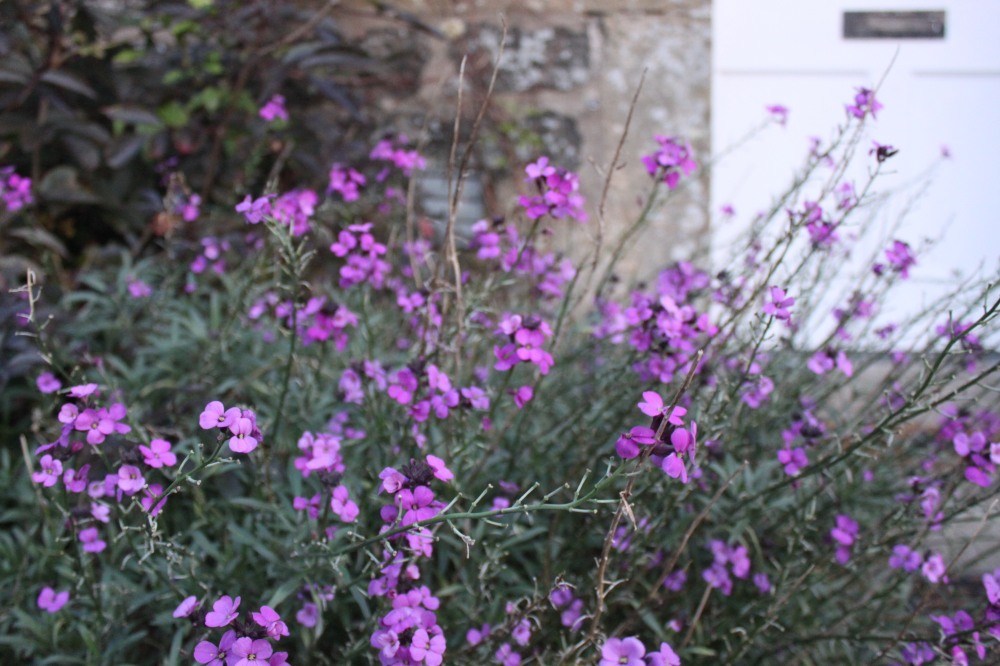
2) Cosmos ‘versailles red’
I suspect this may be the last bunch of cut flowers to come into the house. I am delighted to have kept this going until mid-november. There were a large number of unopened buds on plants that were being hit by frost. So most of the foliage went on the compost but there were a few bunches left over to come into the house. I am mulling over a New Years resolution / challenge for 2020 to see if I can pick a bunch of flowers every week of the year – might need a bit more forward planning though!
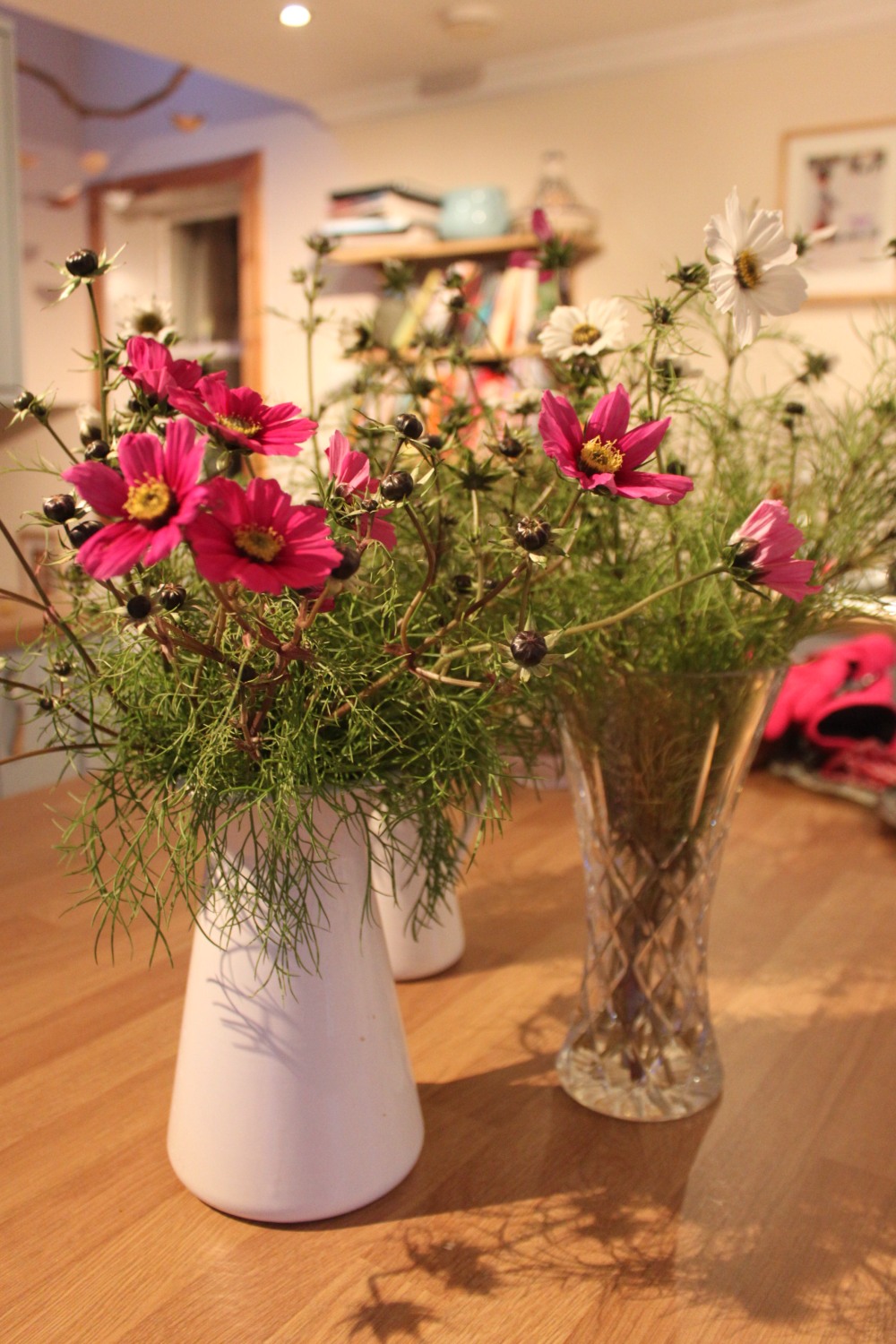
3) Pelargonium ‘cola bottles’
Cola bottles is the name of the plant, not the glass containers that these cuttings are rooting in. I haven’t had much luck with over-wintering pelargoniums but have done slightly better growing them each year from cuttings. Hopefully at least a couple will make it into next spring.
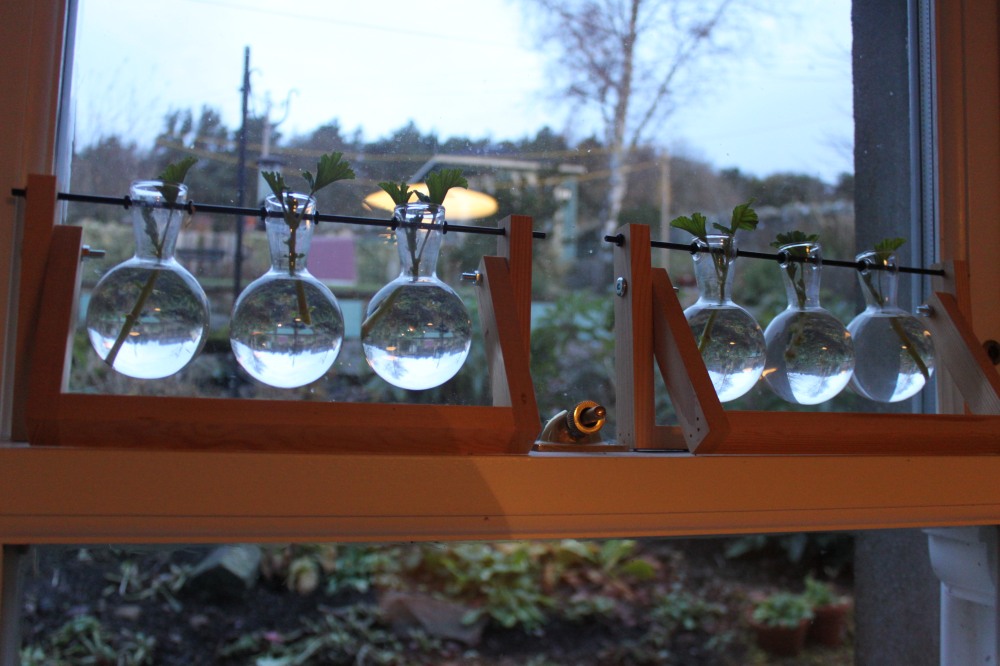
4) Nasturtiums
I heard David Attenborough on the current BBC series stating that Atlantic krill apparently have the largest collective biomass of any single species on the planet.* I am not sure David was acquainted with the nasturtiums that were growing in my vegetable garden. I planted a handful of seeds in the spring (though many more were self sown) and must have carted away at least half a dozen wheelbarrow loads of the stuff this week! Hundreds of seeds are left scattered everywhere so they will be back again soon.
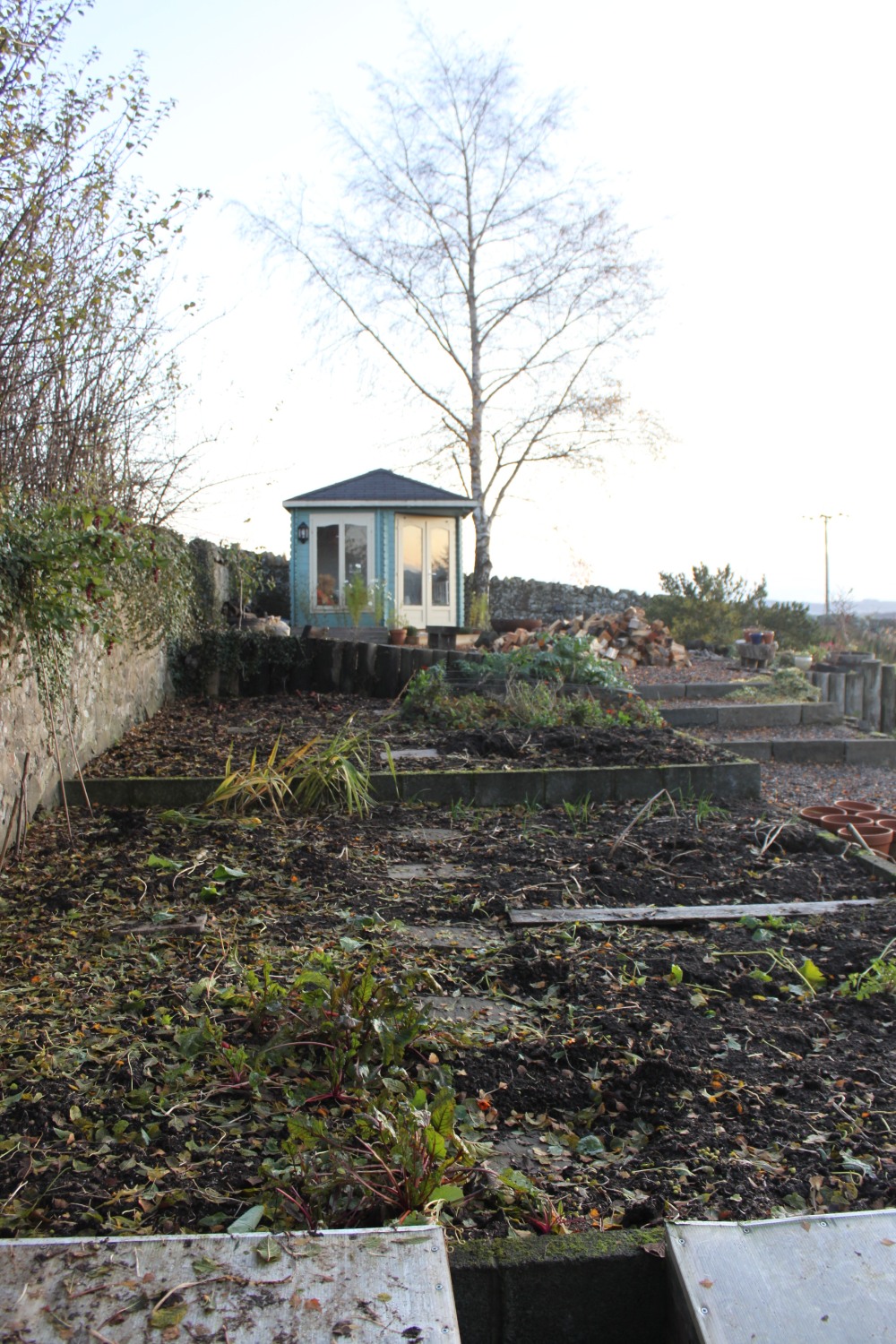
5) The switcheroo
I am nearly done with changing over the collection of pots that are near to the house. The summer annuals have all gone on to the compost heap and been replaced with spring bulbs; mostly tulips but also narcissus, hyacinths and crocuses. There are about forty or fifty pots around the garden all of them little beacons of hope.
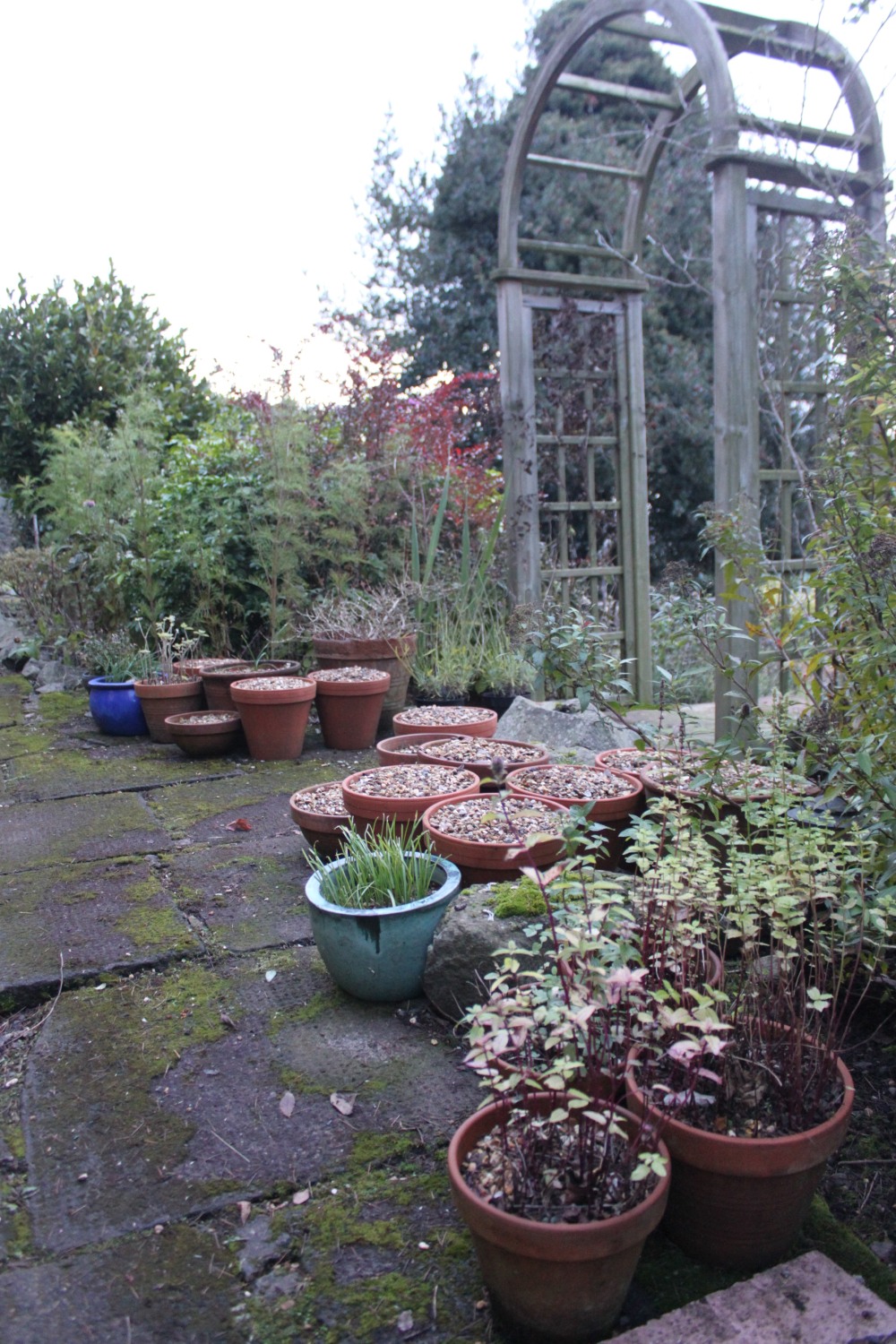
6) The first flowers
Just as the last few flowers have turned to seed, been raked onto the compost or reduced to a handful of cuttings, so the first hints of next years flowers are already starting to form. Underground, out of sight or in the first emerging buds of spring. Its may be cold, dark and wet but ‘thou hast thy music too…’
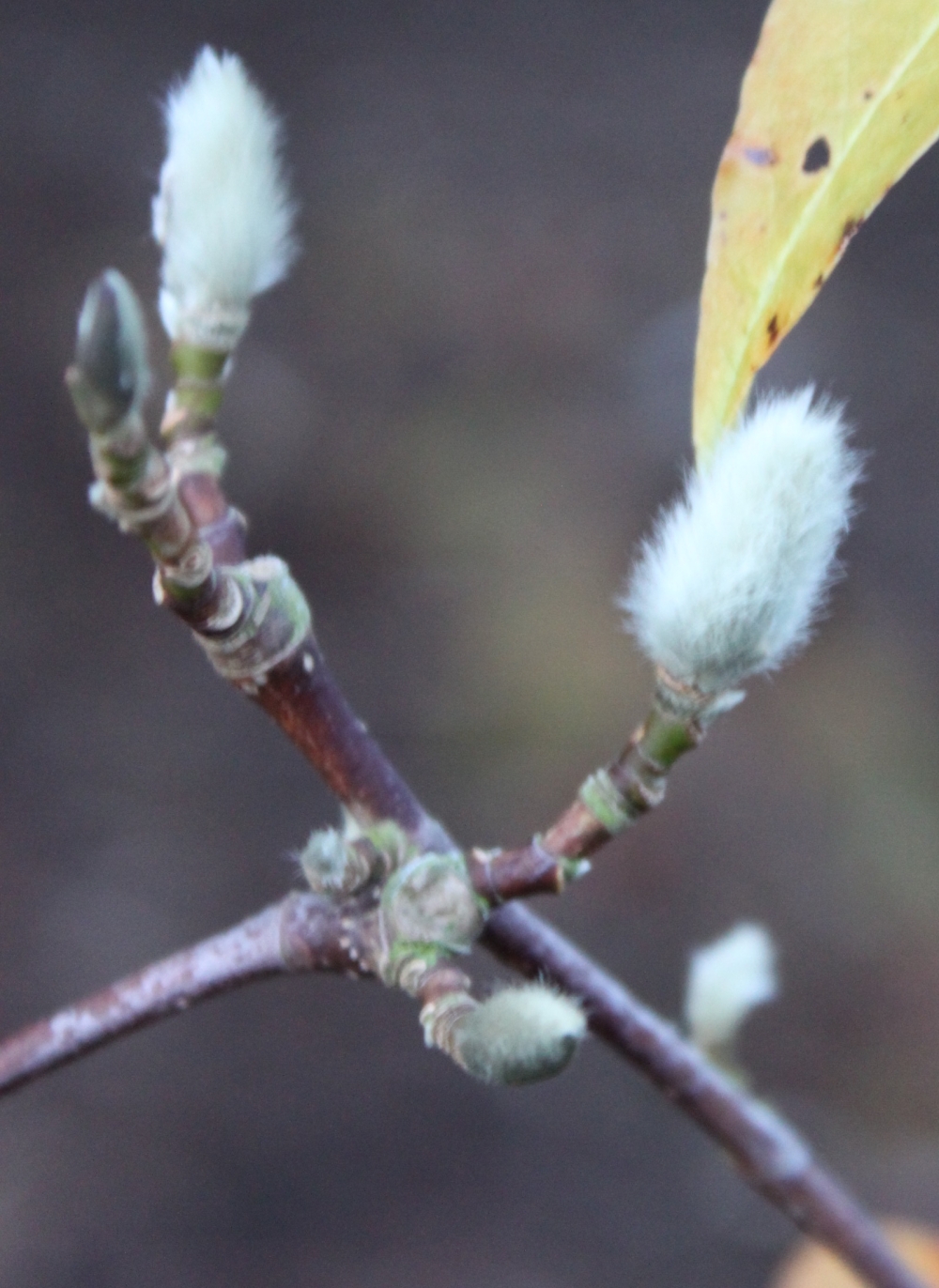
* There is some uncertainty about which species exactly lays claim to the largest collective biomass. Atlantic krill probably is the most voluminous single wild species at an estimated 380 million tonnes. This is nothing though compared to the 500 million tonnes of domesticated cattle. Earthworms of course comprise thousands of different species but are thought to have a collective biomass of over 7000 million tonnes.
If you would like to follow the schoolhouse garden please click on the button at the bottom of this page. Worpdress promises to store your email address securely and I will only send you bunches of flowers and not any nasty weeds.
7 billion tonnes of worms! That’s a fair few alright. Your pots are looking good, I must invest in some more aesthetically pleasing pots.
LikeLiked by 1 person
I seem to have accumulated pots over the years. One or two perish every winter but then more seem to keep appearing in little corners of the garden.
LikeLike
It’s been a while since I’ve visited your six Keith but they’re lovely as ever. I like you sowed a few nasturtium in my veg patch a few years ago and I’m still finding their great great great great grandchildren. I don’t mind – they provide attractive groundcover in places I’m not cultivating. This year I had some very pretty coloured offspring – some delicate apricot coloured ones.
LikeLiked by 1 person
Hi Katharine, I totally agree. I don’t begrudge nasturtiums but it is incredible how vigorous they grow from just a handful of seed. I put some of the remains in the garden waste bin and I swear they are trying to extend themselves back out!
LikeLike
You’re not the first SoSer to write this year about the difficulty of pellies, altho for differing reasons. Here’s hoping your cuttings take. Those pots are splendid – you’ll have a great show in a very short time. Your last photo captures it all, beginning & end.
LikeLiked by 1 person
The books always say that pelargoniums are the easiest plants to look after but I have found that cuttings and over wintered plants both have a tendency to succumb to the cold and damp. I think a heated greenhouse would solve that problem but will have to wait a while for that!
LikeLiked by 1 person
As far away from here as you are, I reckon Erysimum Bowles Mauve is my longest flowering plant too, with the possible exception of Fuchsia microphylla. Ours needs replacing, it’s getting very leggy. It was also number one for butterflies this summer.
LikeLiked by 1 person
It is quite incredible how long they flower for isn’t it? But the flowers start to get straggly and they have this tiny woody central stem which can’t support the growth and topples over eventually – I think that’s something to do with them being brassicas. It’s almost like they literally flower themselves to death.
LikeLike